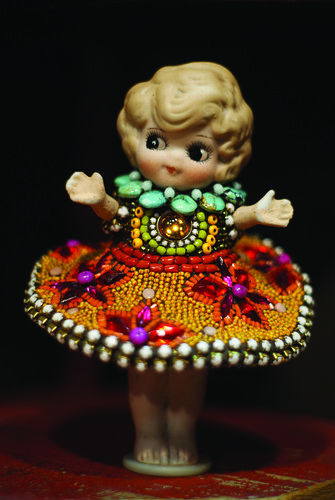The distinction between fine art and crafts is a highly debated topic in the art world.

Last weekend, the Philadelphia Convention Center became the home for more than 200 talented craftspeople for the Philadelphia Museum of Art’s 33rd Annual Craft Show. From jewelry and textiles to ceramics and glass, the show brought a diverse audience of art enthusiasts to the Philadelphia area.
Walking among the many booths displaying the creations of the craftsmen and -women, I began to think of how the show was advertised. It was a craft show – not an “art show” or a “fine arts show,” or even an “artists’ showcase.”
There has always been a distinct separation between craft and art. When we register for art classes, there are some classes categorized as art and others as craft. When we were younger, didn’t summer camp leaders call our art sessions “arts and crafts”? Why couldn’t they have just called it “arts”?
I had to ask myself at this show: What is the difference between craft and fine art? And more importantly – should there be such a separation?
When it comes to fine art, crafts seem to be constantly swept under the rug when compared to more “fine art techniques,” such as painting, drawing and classic sculpting. In the university setting, crafts are defined by classes like glass blowing, metal working, jewelry making and textile weaving.
These crafts are the creations of beautiful things that are not just art but could ultimately be used in everyday life. Fine art, over time, seems to have taken this manifestation of something that can not to be handled by the average hand, work meant to be looked at, appreciated, but not touched or used for daily activities.
Philosophers have argued over time that fine art has only aesthetic purposes or at the very least, solely visual purposes. The battle between art and craft has waged on, but some craftsmen have raised their blowtorches, looms and saws and said “no more!” to this divide, and the lines between art and craft are becoming more and more blurred.
As I walked around the craft show, I took up conversations with a few exhibitors about the fine art versus craft divide. One more passionate member I spoke with was Mike Libby, an artist who uses preserved bugs and pocket watch parts to create intricate, mechanized insects. I asked him whether he considered himself a fine artist or a craftsman.
“Oh, I’m an artist,” Libby said confidently. “But more people are sensitive to one title than the other sometimes. To be an artist, you have to have something behind your work. You’re knowledgeable about society, what’s going on in the world, the problems and the issues, and it is reflected in your work.
“You can’t just say your work is just about ‘life’ though, because everything made is about ‘life,’” he added. “There has to be a specific issue, what is the purpose?”
When asked, then, why he would come to a “craft” show if he labeled himself a fine artist, Libby said, “from a business point of view, this is good to get my name out there.”
The opinions of other exhibitors were similar: Craft is different from art in more positive aspects. Judith Kinghorn, a jewelry maker concentrated on organic forms in her work, expressed how craft is about educating those around you.
“This show is about educating others about technique and skill, not so much an artistic aspect,” Kinghorn said.
Kinghorn was not alone in considering craft separate from fine art, as other exhibitors – like jewelry maker Christina Goodman – pressed on educating the public to better appreciate the hard work put into creating their crafts.
“I’m pretty easy going on the whole subject,” Goodman said. “But I know one thing, you can always be a craftsman and get away without being a fine artist, but you cannot be a fine artist without being a skilled craftsman.
“I guess I’m both. I’m a craftsman because of the gilding and carving I do and a fine artist with my miniature paintings,” she added.
The opinions of the artists were diverse. And upon seeing the Philadelphia Craft Show’s many talented exhibitors, crafts should be granted as much appreciation – if not more at times – as any fine arts creations.
In my eyes, they’re all talented fine artists, and the label of craft can have a positive connotation – expressing the unique skill needed to complete each piece. Just because the art can be used every day, doesn’t make it any less “fine.”
It is an artistic battle of sorts, which I’m sure will wage on, but I encourage all artists and enthusiasts to explore the world of craft, whether by exploring a local craft show or enrolling in a class like glassblowing or jewelry making. Appreciation for such things, it seems, comes best through hands-on experience.
Nicole Welk can be reached at nicole.welk@temple.edu.


Be the first to comment